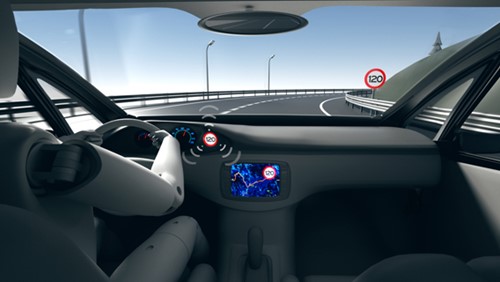Speed Assistance Systems

Excessive speed is a factor in the causation and severity of many road accidents. Speed limits are intended to keep traffic speeds at an appropriate level for a given environment, ensuring the safety of motorists and other road users. Properly chosen, these speed limits should facilitate efficient traffic flow and promote safe driving conditions. Greater adherence to speed limits would avert many accidents and mitigate the effects of those that occur.
Euro NCAP promotes installation OF Speed Assistance Systems that support drivers to control their speed.
Euro NCAP assesses different functions of Speed Assist Systems:
- informing the driver on the present speed limit;
- warning the driver when the car’s speed is above the set speed threshold;
- actively preventing the car from exceeding or maintaining the set speed.
The most advanced systems, either speed limiter or intelligent Adaptive Cruise Control (ACC), combine all these functions, where setting the speed can be done by simply confirming the speed limit detected and shown by the vehicle on the basis of speed sign recognition or digital map data.
The functionality of the system is considered to make sure that the system can be used without undue distraction to the driver. Additionally, a subtle warning is given to the driver when the vehicle is not able to control the speed to the set maximum.
For systems that actively control the speed, tests are performed to ensure the system does this accurately.
 Introduced in 2009. Upgraded in 2018.
Introduced in 2009. Upgraded in 2018.